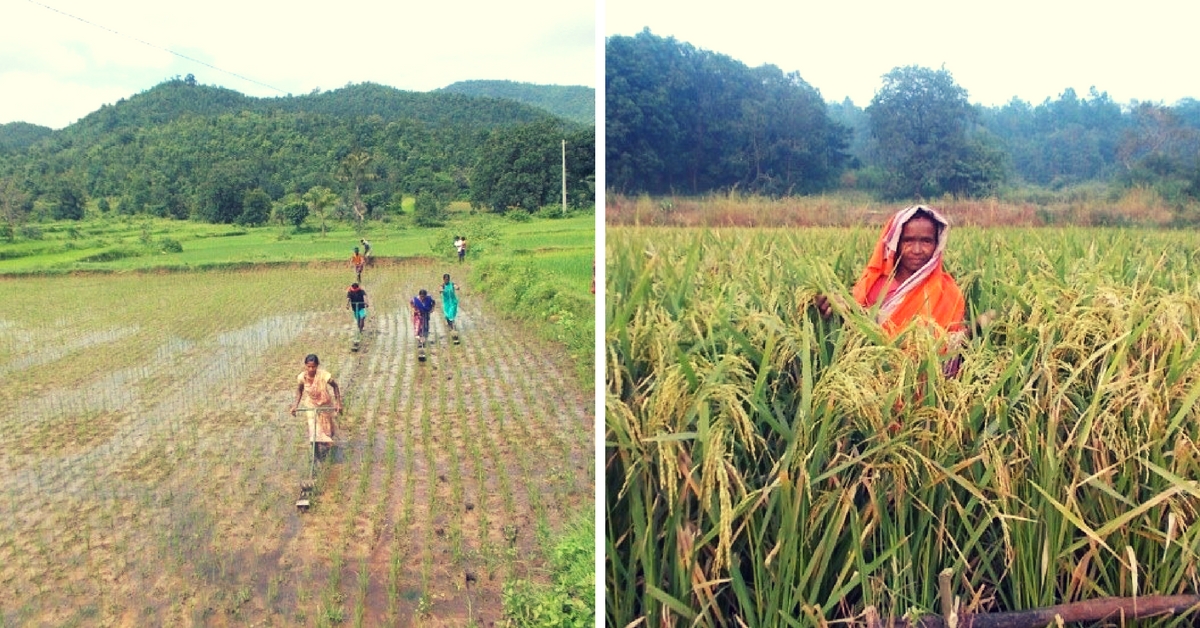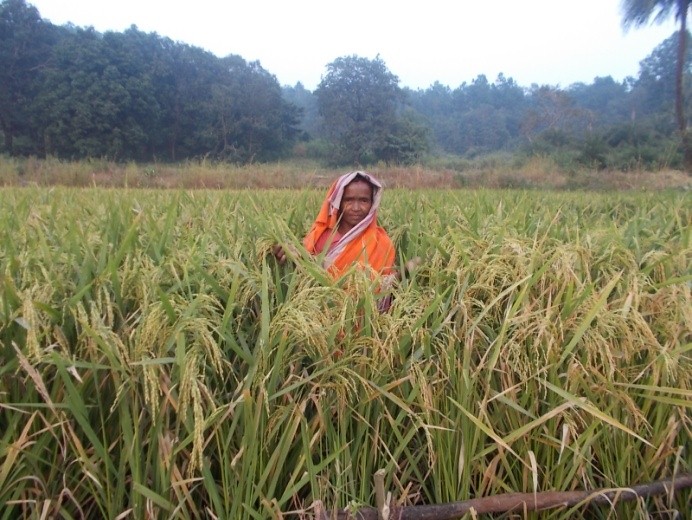This Unique Farming Technique Doubled the Rice Produce of an Entire Village in Odisha
Gacherigaon village located in Mundigarh gram panchayat in Tumudibandh block of Kandhamal district, Odisha, uses the system of rice intensification (SRI) for paddy cultivation. This is how it works.

Gacherigaon village is located in Mundigarh gram panchayat in Tumudibandh block of Kandhamal district, Odisha. The village has 156 people in 26 households and all the residents belong to the Panga Kondh community. Historically, members of the Kondh community depends on agriculture and forest their livelihood. They practice millets-based, biodiverse farming and are involved in pulses and paddy cultivation in low lands.
Traditionally, the community cultivates pulses of rice bean, pigeon pea, and country beans, along with mustard seeds.

Majority of the village inhabitants are small and marginal farmers who practice traditional agriculture. But this changed in the year 2012 when Nirman, a grassroots NGO intervened in the region with an aim to improve the standard of living of these people through sustainable agriculture technology and women empowerment.
A village level meeting was conducted to discuss the economic status of the residents and a farmer’s group called Gacherigaon Jaibiko Krushak Sangha was convened for promotion of sustainable agriculture in the village. This was followed by a village-level training programme on system of rice intensification (SRI) for paddy cultivation and kitchen garden. It was later decided that SRI will be promoted in the entire village. Following a training programme, only eight farmers agreed to adopt SRI for paddy cultivation that year.
SRI cultivation involves the following procedure:

Nursery beds are developed for raising the seedlings, which are then transferred to the main field after 12 – 14 days. The seedlings are planted with a spacing of 10 x 10 inch on the main field to promote the production of more tillers. As a result, each plant produces around 40-55 tillers. To increase fertility of the land, the residue collected from washing the cattle-shed (a mixture of cow dung, cow urine and water) is spread in the main field.
Farmers observed that an increase in spacing led to the growth of weeds (which can be easily removed with the help of weeders) during the initial days, but incidences of pest and diseases reduced. Paddy cultivated via conventional methods leads to frequent pest outbreaks and disease infections. Farmers noticed that paddy yield not only doubled under the SRI method but the quality of seed also improved significantly.
The success of eight farmers drew attention of the other farmers of the village and five more farmers adopted the method for paddy cultivation the next crop season. The success of SRI during the following crop season attracted more farmers and eventually the entire village adopted the method.
“I will never give up on SRI,” says a woman farmer.

When asked if SRI is laborious and demanding in terms of labour, she responds, “No, my daughters-in-law and I do all the work. As you can see we are weeding using the weeder and we don’t have to hire labour”. Another farmer, Sada Majhi, shares that he had mixed feeling after attending the training programme on SRI, “I was excited and interested in the new technique, but I had doubts too because the seedlings are planted wide and far apart…But after a month we observed that our neighbour’s crop turned pale and yellow but the crop in my field was lush and green, thanks to the magic manure.” He adds that the family was able to produce just enough rice for themselves for nine months and had to depend on the market for the rest of the year. But now they produce enough for the entire year.
It is interesting to see that women proactively do almost all the work related to paddy cultivation under SRI. Gacherigaon village has earned a new identity in the entire block; it is now known as “the SRI village”. All the farmers have become master trainers now and Majhi is frequently invited by the government agriculture department to educate other farmers about SRI. The village also received participatory guarantee scheme (PGS) certificate for production of organic agriculture products in the village.
(Written by Sabnam Aferin and Kanna K. Siripurapu)
Know more about Nirman here:
All pictures: Aditya Pratap Singhdeo
Like this story? Or have something to share? Write to us: [email protected], or connect with us on Facebook and Twitter.
NEW: Click here to get positive news on WhatsApp!
This story made me
- 97
- 121
- 89
- 167
Tell Us More
We bring stories straight from the heart of India, to inspire millions and create a wave of impact. Our positive movement is growing bigger everyday, and we would love for you to join it.
Please contribute whatever you can, every little penny helps our team in bringing you more stories that support dreams and spread hope.



















